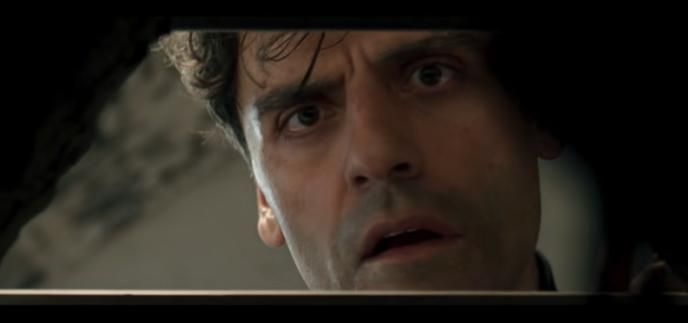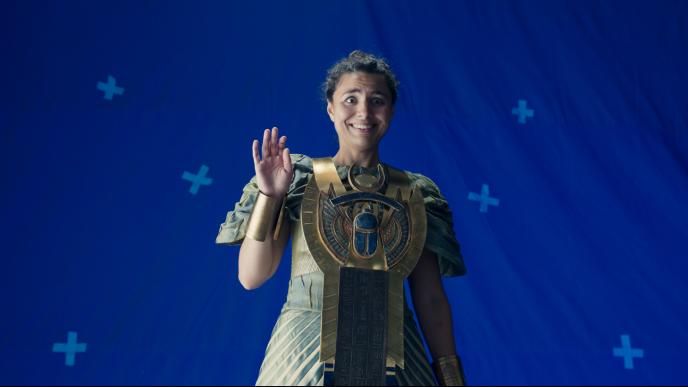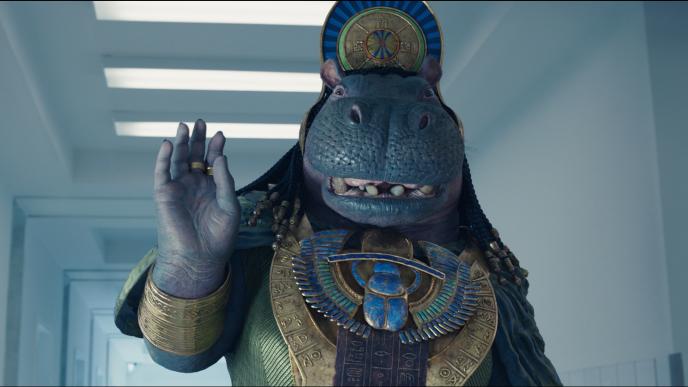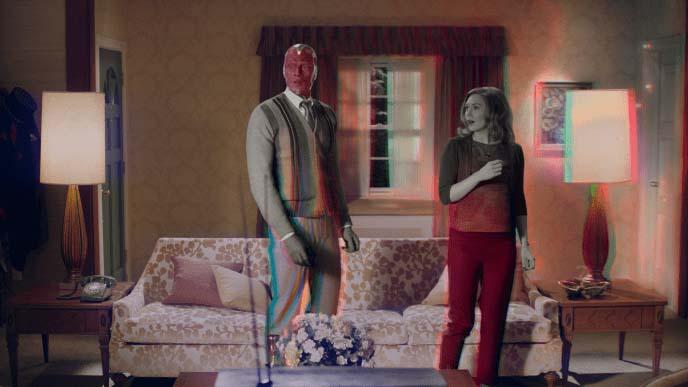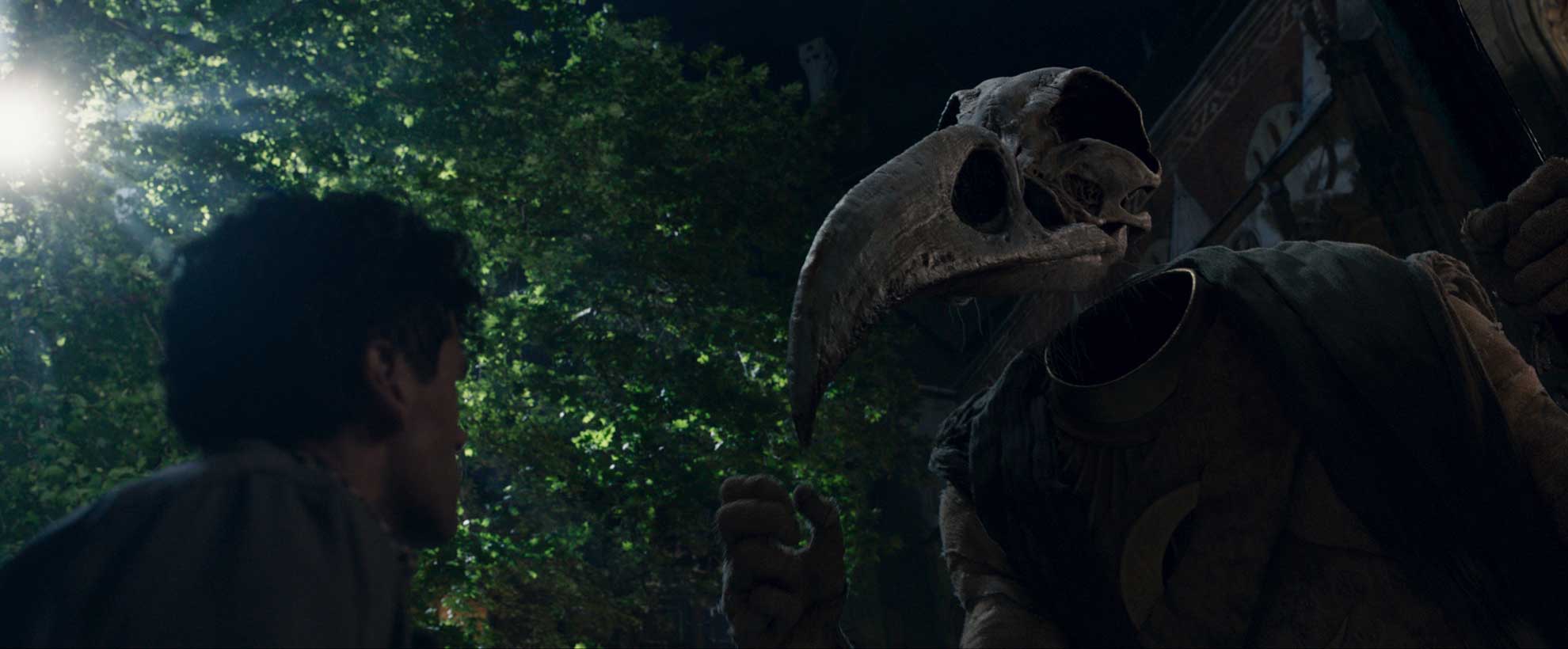

Moon Knight Season 1
Framestore was proud to bring its ‘beginning to end’ creative offer to Marvel Studios’ Moon Knight, with Framestore’s Pre-production Services (FPS) division providing the entirety of the show’s previs, as well as a majority of the postvis services across every episode, while the studio’s VFX teams in London and Mumbai delivered 480 shots of note-perfect VFX.
The series follows Marc Spector (Oscar Isaac), a mercenary who lives with dissociative identity disorder and serves as the earthly avatar for the Egyptian moon god Khonshu. The show’s six episodes provided a huge amount of creative scope for Framestore’s teams of visualisation and VFX experts, from epic environments and heart-pounding chase sequences to the creation of some truly larger-than-life CG characters.
It's all in the vis
“We were lucky to get in at the ground floor when it came to working with directors Mohammed Diab, Justin Benson, and Aaron Moorhead,” says Vincent Aupetit, Creative Director, Pre-Production Services. “There was a lot of discussion about how this character was going to be introduced to audiences, and with previs we were able to help the team shape that creative narrative and the world that Marc Spector inhabits.”
This relationship also proved fruitful for Framestore’s VFX team, led by VFX Supervisor Stuart Penn. “To have Vincent and his team so involved in the show and just a call away really helped,” says Penn. “The vis work being in our pipeline already and ready to go was great from a ‘plug in and play’ perspective, but having insight into the creative process was also a huge benefit. It meant we knew what the plans were, the scope of the work and the thinking behind it all.”
Framestore’s VFX team were leading the development of several key assets that were being shared with other vendors including Moon Knight himself, his Mr. Knight alter ego and Khonshu. The developments could easily be shared with FPS so that the previs and post vis represented the latest state of the characters.
As well as a broad range of locations and set pieces, the FPS team also knew that their work had to sensitively reflect the world of a character living with dissociative identity disorder. “When you’re dealing with a chase across the Cairo rooftops you generally have a clear idea of where you’re headed,” says Aupetit. “But there were subtler, more granular concerns when it came to Marc Spector’s world: we had to think how we might visually represent his alters, and how the different identities within this one person might interact with the world around them. Steven Grant doesn’t know that he’s Moon Knight, and so we had to come up with a way to show the transition between the two characters while maintaining the show’s exciting pace.”
Alps I Did it Again
This need to signify changes in perspective was key in the show’s first episode, where Isaac’s character ‘wakes up’ in a speeding van, pursued by assailants unknown. As he jumps from one alter to another, the scene switches point of view. “We had to play with that sense of confusion in the cinematography,” says Aupetit. “You have this blend of frenetic action and absurd comedy, so when it came to the pace of the scene and the shot design it was important to lay it all out [in previs]. We also had to work with an eye to real-life conditions, so the stunts could be achieved practically and captured in-camera.”

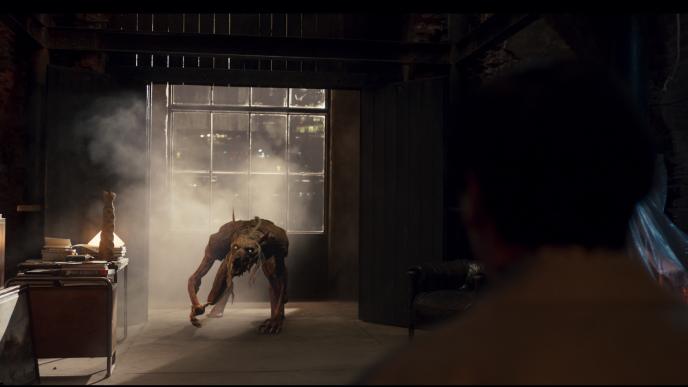
Jackal and Hide
Tonally different, but equally important in setting the scene was an early, creepy sequence that sees another of Isaac’s characters, Steven Grant, stalked through a museum by a mysterious supernatural creature. “This scene was all about tone, pace and tension,” explains Aupetit. “We play with reflections, lighting and shadows while Steven becomes increasingly terrified, and a crazy, nerve-wracking chase ends in a cool reveal as we see Moon Knight for the first time.” As for that shadowy creature pursuing him? A jackal, brought to life by Framestore’s VFX team. “There’s a Jaws-like suggestion of threat with the jackal,” says Stuart Penn. “You catch fleeting glimpses to help build a sense of atmosphere. The final design was quite stylised, along the lines of an ancient Egyptian statue. It’s rangy, and somewhat decrepit looking: exactly the kind of thing that looks like it should be skulking in the shadows.”
The show made significant use of reflections to allow the Steven and Marc alters to interact. Some of these interactions required complex motion control setups to achieve the shots. “The bathroom sequence at the end of the first episode was a particular challenge, with its multiple mirrors reflecting to infinity” says Penn. Framestore’s VFX team solved the original camera move of Steven and provided motion control data to allow additional plates of Marc to be shot. A CG version of the bathroom was used to replace unwanted cameraman reflections and add glowing hieroglyphs to the final shot.
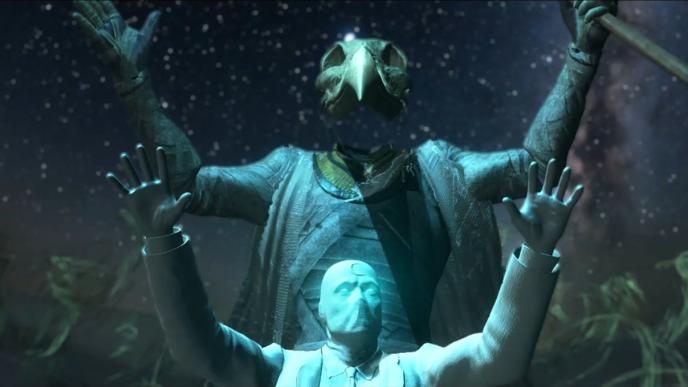
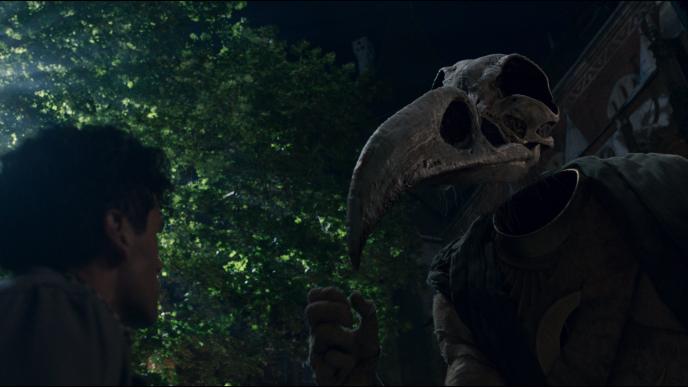
Gods and Men
After Moon Knight’s first heroic reveal we’re soon introduced to an array of characters all of whom drew on Framestore’s creature and character animation skills. Moon Knight’s costume saw the team working from Marvel concepts, with much cloth, texture and simulation work at play when it came to how the rapid, ribbony mummification was to take place. For alter-ego Mr. Knight, the team were able to work from the same patterns that Marvel’s designer had used to make the real-life suit. “While you might think Mr. Knight required less VFX work since his costume is less ornate, the practical realities of shooting a character in a pristine white suit told another story,” laughs Penn. “There was a lot of stunt work which involved rolling around on the streets of Budapest, and as you can imagine Mr. Knight’s suit didn’t stay crisp for very long. He wound up covered in oil, dirt and other gunk, so at some points we’re replacing as much as 90% of him.”
Other characters, however, required more than full-CG costumes and a hand with their dirty laundry. Moon god Khonshu - the glowering, bird-skulled deity using Marc Spector as his human avatar - presented a number of logistical challenges, not least the need to convey emotion with a character that had no face. “Animating Khonshu relied a lot on posture and miniscule turns of the head,” explains Penn. “We also used the ragged bandages of his costume as a way of conveying personality, mood and what’s going on in a scene. The animation team really brought him to life, despite the challenges of having an expressionless skull to work with.”
Hippo-headed goddess Taweret, meanwhile, presented no problems when it came to conveying emotion. “We landed on the right design for Taweret quite early on,” says Penn. “She was a fun character to work on because she’s warm, caring and humorous, and just trying to look after Marc and Steven. On set Antonia Salib was dressed in a human scale version of Taweret’s costume which gave us great lighting and movement reference, as well as a brilliant performance to work from. The main challenges were figuring out how to translate Antonia’s movement and facial performance onto our CG Taweret, who was a bulky nine foot tall, and with the facial features of a hippo. The animation team lead by Chris Hurtt nailed the character early on, creating a character vignette based off a casting read, before filming had started.”

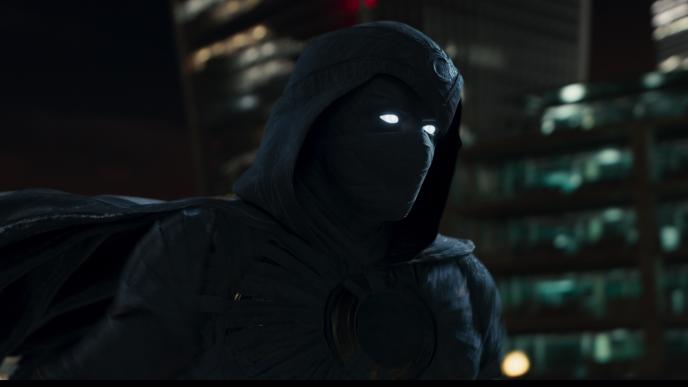
Capital Ideas
The globe-trotting series required no shortage of canny environment and compositing work. The second episode sees a dramatic chase through the streets - and across the rooftops - of London. With the action shot in Budapest it was necessary to sub in careful digital reconstructions of iconic London landmarks, with Stuart Penn working with the team to shoot night time plates around Bank, Somerset House and the River Thames. These were then integrated with live-action stunt work, and a CG cape and costume enhancements, to form a seamless, fluid chase sequence involving double deckers, a furious jackal and moonlit leaps between buildings.
Other sequences relied on even greater creative leaps, such as the third episode which sees Khonshu manipulate the night sky so that the team can use a two-thousand-year-old star map - a sequence for which Framestore did not actually provide VFX work. “This was a super crazy, conceptual sequence for FPS,” says Aupetit. “We had to devise a way for Khonshu to move the stars in a manner that looked interesting - a sort of intense, beautiful, kaleidoscopic light show - but also credible. The team worked on that from previs to postvis, and we’re really pleased with the results.”
Both FPS and VFX teams also worked on the Duat sequence, which sees Marc and Steven aboard a barge as it carves its way through the endless shifting sands of the Egyptian underworld. Aupetit and his team helped the show’s creatives conceptualise both the sequence and Duat itself, while Penn delivered VFX so realistic that you feel you need to shake sand out of your shoes after watching the episode. “There was a lot of CG sand involved,” says Penn. “Getting the look right of the boat wakes as they cut through the desert required a lot of work, as did the look of the zombielike assailants who crawl onto the boat. And nailing the fine spray of sand right as they moved and interacted with the cast was important, because it really helps heighten the sense of the otherworldly - a huge amount of credit is due to our FX and comp teams for this one.”
The show’s epic final battle is a sequence that the FPS team were particularly proud of. “It’s probably one of our biggest achievements as a previs team,” says Aupetit. “Rather than having storyboards we actually worked directly with the director and client-side VFX supervisor to bring their vision to life straight from the script. It’s a battle of gods, so there was a massive creative element when it came to designing how the characters and their powers would look as they fought above Cairo. But there were also numerous deeply-involved technical aspects to consider when it came to creating the shots and the on-set methodology, from virtual location scouting to lighting and techvis. It was a massive undertaking for a massive finale, and I think the results speak for themselves.
